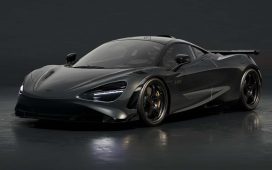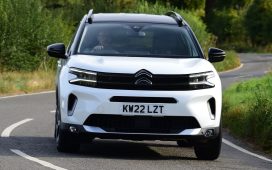In his L.A. Times commentary “Los Angeles, 2043: An optimistic scenario for transportation”, John Rossant says a few good things about public transit, congestion pricing and renewable energy. However, much of his commentary reads like a laundry list of future market fantasies of Silicon Valley billionaires and the natural gas industry, i.e. the fantasies of very monied and influential interests who want still more money thrown at them.

First of all, making a car autonomous (RoboTaxi) does nothing to mitigate its impact on the environment. It’s still a two-ton box taking up space on streets to move a single person who weighs less than 200 pounds. Studies show that autonomous taxis, even if they actually do work as intended, increase the burden of automobiles on the environment in terms of road space, energy and tire/road wear due to increased vehicle miles travelled per person. “Air Taxis” are really just helicopters. Even if battery-operated, they are the most energy inefficient form of transportation besides space rockets. Despite the product-placement advertising he does for Joby AirTaxi, Amazon and other venture capital-backed companies in his commentary, you cannot change this fundamental physical fact.
Oil and gas companies are lobbying heavily for hydrogen in California and elsewhere. Despite some much hyped renewably-powered electrolyzer hydrogen production pilot projects (which consume a lot of fresh water), the vast majority of hydrogen used in the world today comes from natural gas. Rossant neglects to mention that his CoMotion organization receives financial support from BP and Shell. They make their money selling fossil fuels extracted out of the ground, and hydrogen derived from these hydrocarbons is a way for them to continue doing just that. The promise that economical hydrogen produced from renewable energy is “right around the corner” has been played on repeat since the 1970s. It hasn’t yet happened. The cost of renewably-produced hydrogen is still several times that of the fossil fuel-sourced variety.
Rossant does mention public transit in passing, but gratuitously throws out there that by 2043 L.A. Metro’s light rail fleet will be “partially powered by hydrogen fuel cells, small hydrogen-powered electric motors”. There is no reason to do this. Metro light rail has already been zero-emission for over 30 years, running on the tried-and-true technology of rail electrification using overhead, or catenary, wires. Last year, the EVB regional railroad in Lower Saxony, Germany was the first in the world to introduce a fleet of hydrogen-powered trains. However, these hydrogen trains have turned out to be a disaster, plagued with horrible reliability problems, massive cost overruns, and half of the promised range on a full tank of hydrogen. A major cost factor was that as a result of market forces (supply/demand/market speculation), the price of hydrogen skyrocketed just as these trains were introduced. In this case, the hydrogen was coming from Russian gas. Lower Saxony’s public transportation authority recently announced that no more hydrogen trains will be pursued, and that the remainder of the diesel fleet will be replaced with electric trains that use batteries combined with overhead wires. Another state in Germany, Baden-Württemberg, has come to the same conclusion after an extensive study.
Whether for light rail trains, high-speed rail or heavy freight trains, electric rail is the most energy efficient and greenest way of powered transportation over land. The rest of the world knows how to do this well. In California, our decision makers remain quite ignorant about how rail electrification works and thus easy prey for gas industry lobbyists pushing the false solution of hydrogen rail. Hydrogen power for rail applications has very poor overall energy efficiency of about 34 percent, compared to about 86 percent for an electric train using an overhead wire. That means two thirds of the energy used to produce the hydrogen is wasted. Hydrogen vehicles powered by hydrogen from electrolysis- cars, trucks, and trains, would therefore have at least three times as great a demand on the power grid as vehicles powered directly by electricity. Then on top of that, the fresh water demand of electrolysis would stress the water supply. What if California is locked into a severe drought in the year 2043? Combined with high stress on the power grid, the water demand of electrolyzers would be insult to injury. To achieve clean transportation utopia by 2043, Southern California needs to build extensive overhead catenary electric rail now, and not wait around for questionable technologies to improve.
Rossant writes that in his future L.A. that “tens of thousands of diesel trucks that until the early 2030s clogged the once-smoky Alameda corridor along the 710 Freeway have given way to clean fleets of driverless hydrogen fuel cell-powered trucks, which then fan out across America”. A 710 Freeway clogged with hydrogen-powered trucks is still a clogged freeway. Every truck on the road still adds to congestion, crash risk (trains are statistically much safer per freight ton-mile), and tire/road wear and brake dust pollution- the human health impacts of which are only beginning to be understood. A truly transformative future would involve electric trains transporting goods as much as possible, instead of merely converting trucks to a different fuel source.
Why is there no mention of future electric trains on the Alameda Corridor, the publicly-owned three-track railroad corridor for the Ports of L.A. and Long Beach? It was designed with enough overhead clearance for catenary wires over the tallest double-stack container trains. It is currently operating at only less than half of its throughput capacity, something you cannot say about the 710 Freeway. Moving a ton-mile of freight by rail uses at most a third the energy of moving it by truck, due to the mechanical friction of steel vs. rubber wheels. How about trying to increase the freight mode share of rail to reduce the overall number of trucks on the 710 Freeway?
Brian Yanity, of Fullerton, is the Vice President-South of the Rail Passenger Association of California and Nevada (RailPAC), a 501(c)3 all-volunteer non-profit passenger rail advocacy group of railroad professionals and advocates that has campaigned for improved personal mobility in California and the west since 1978.










